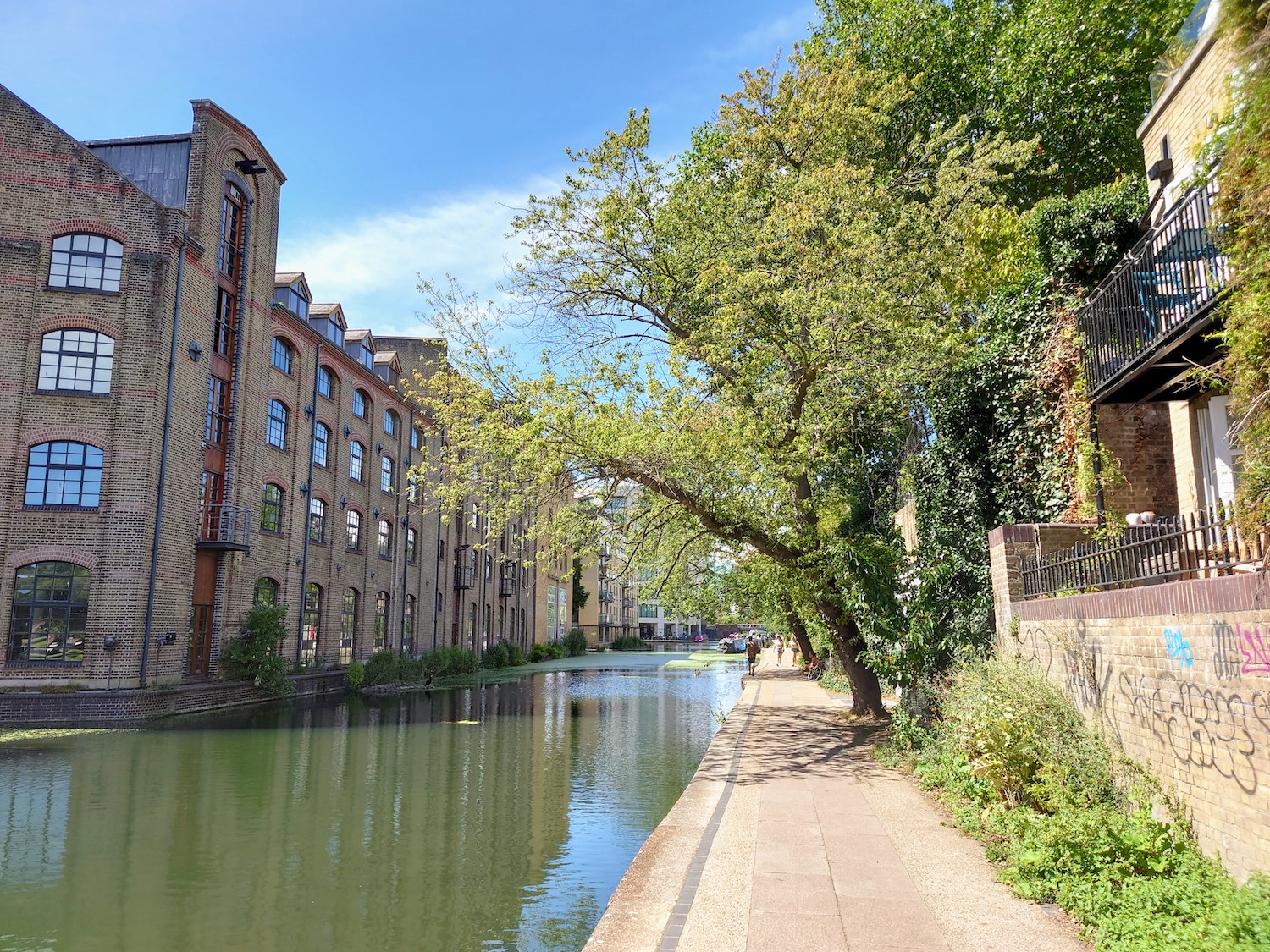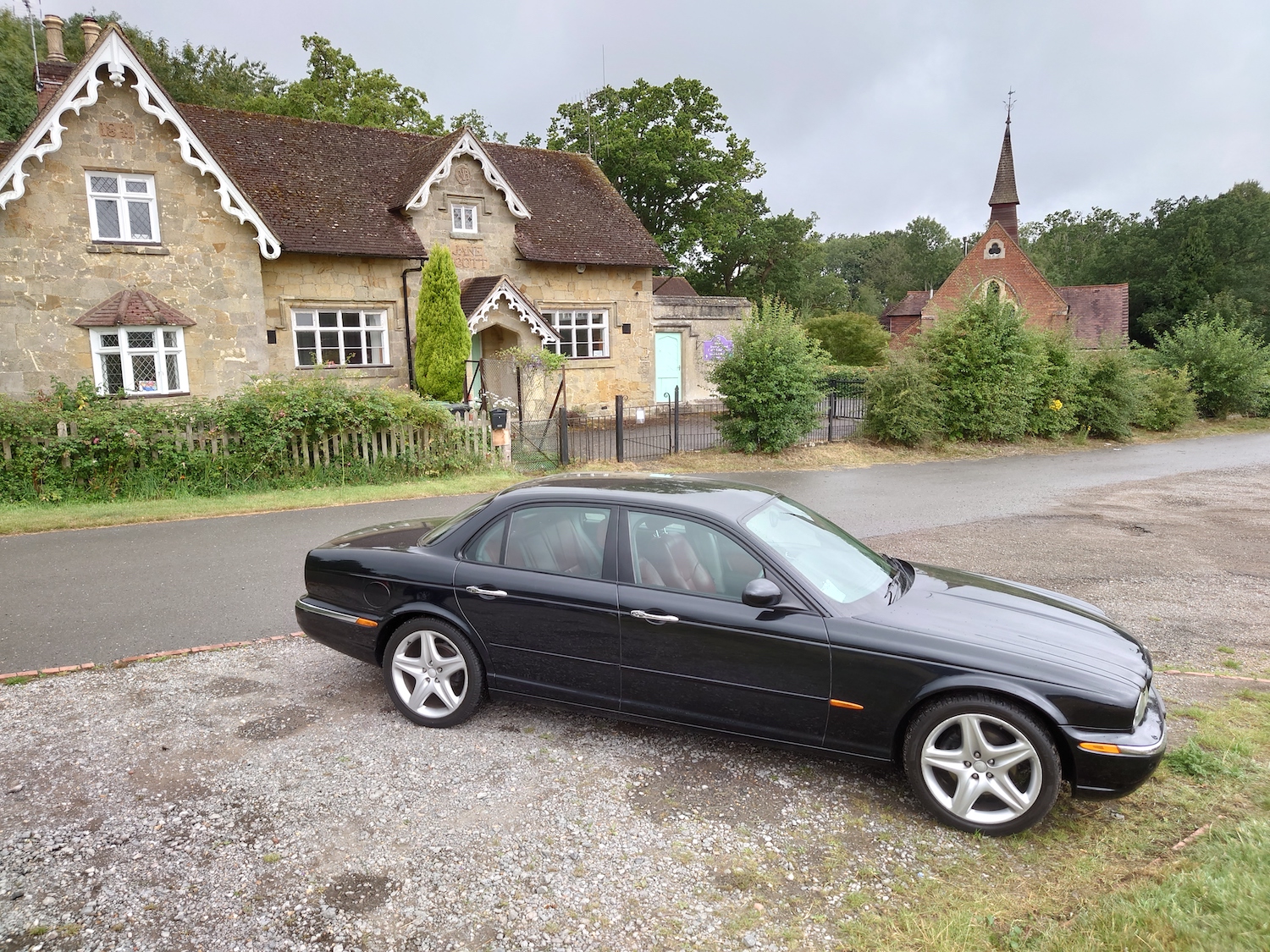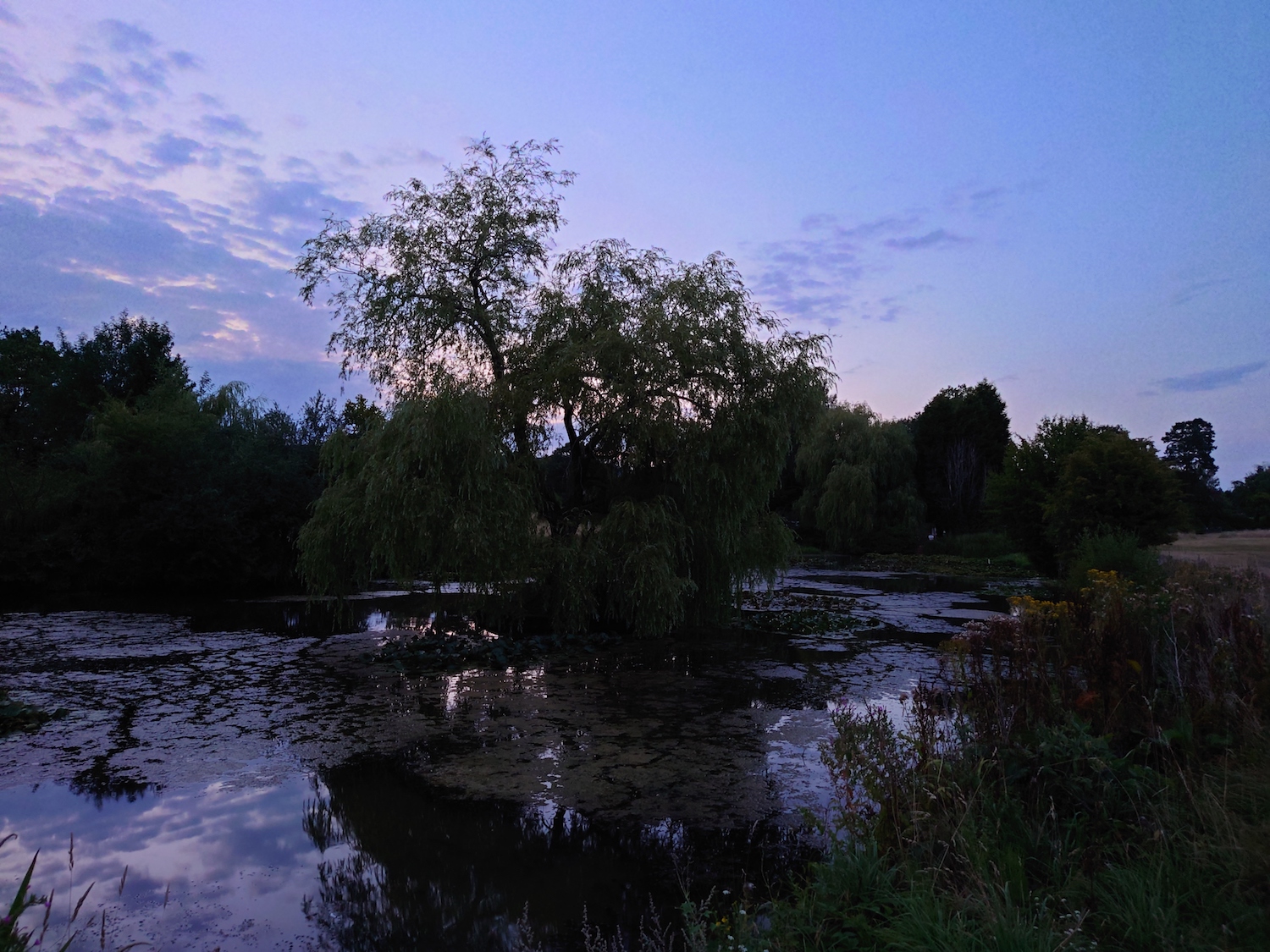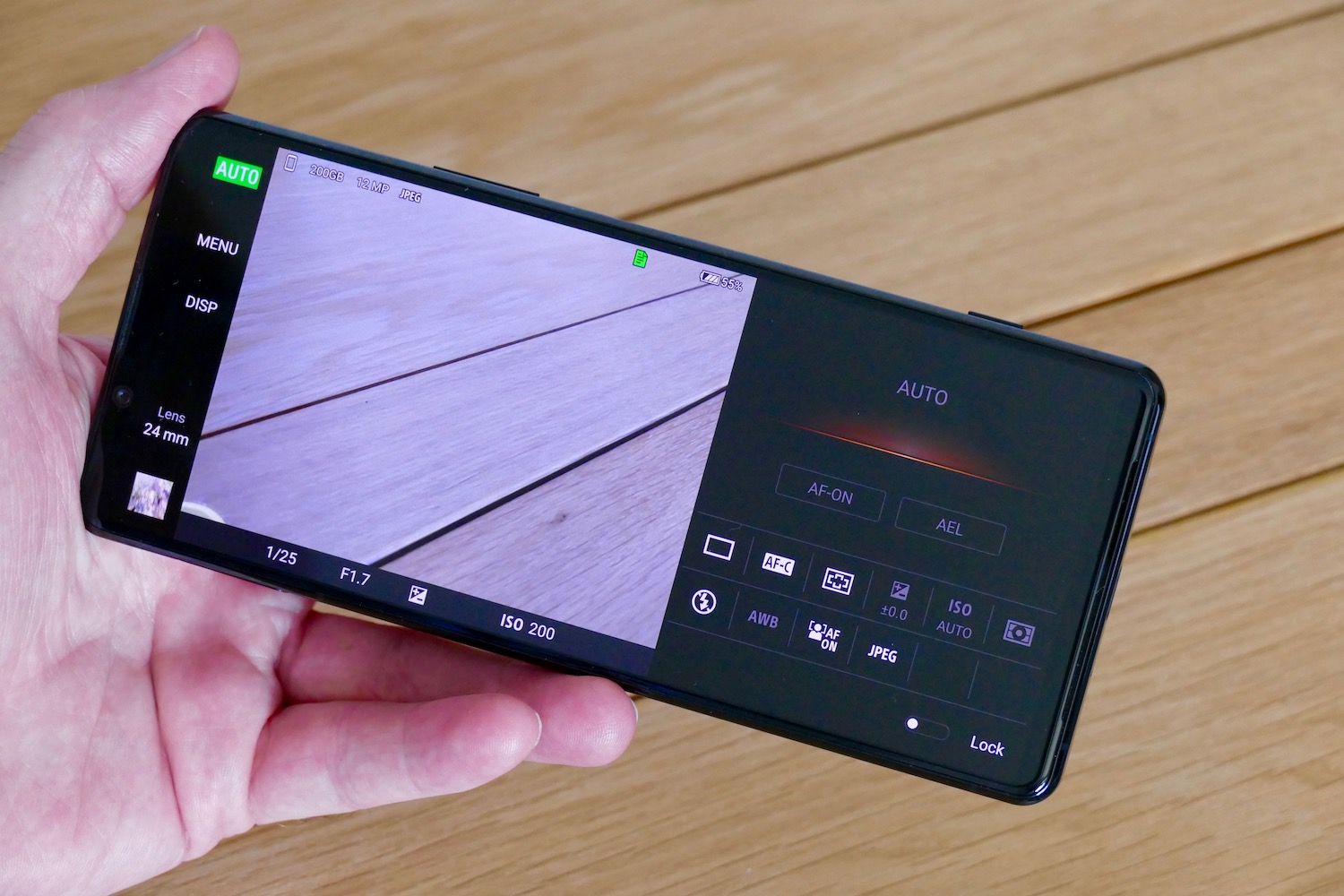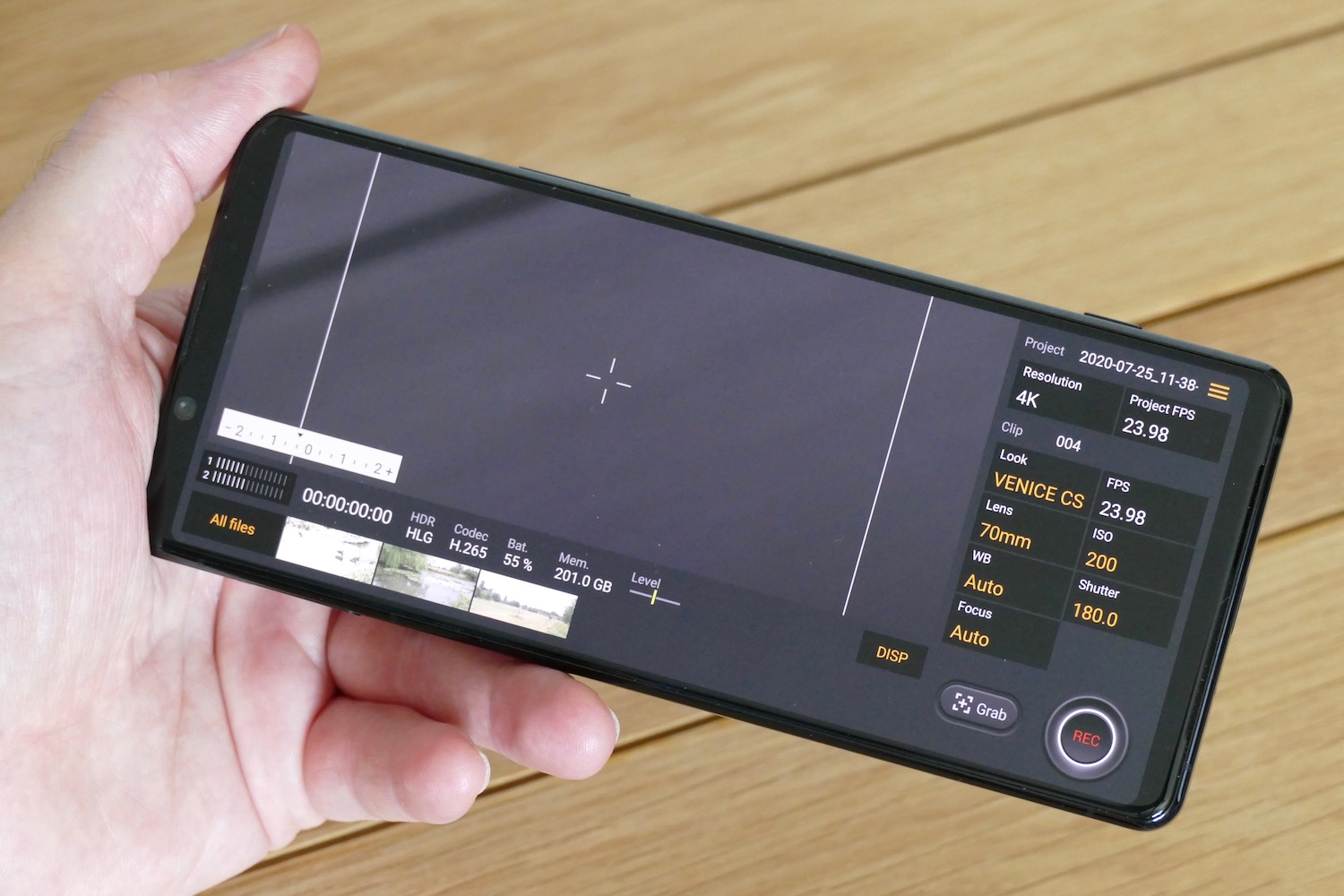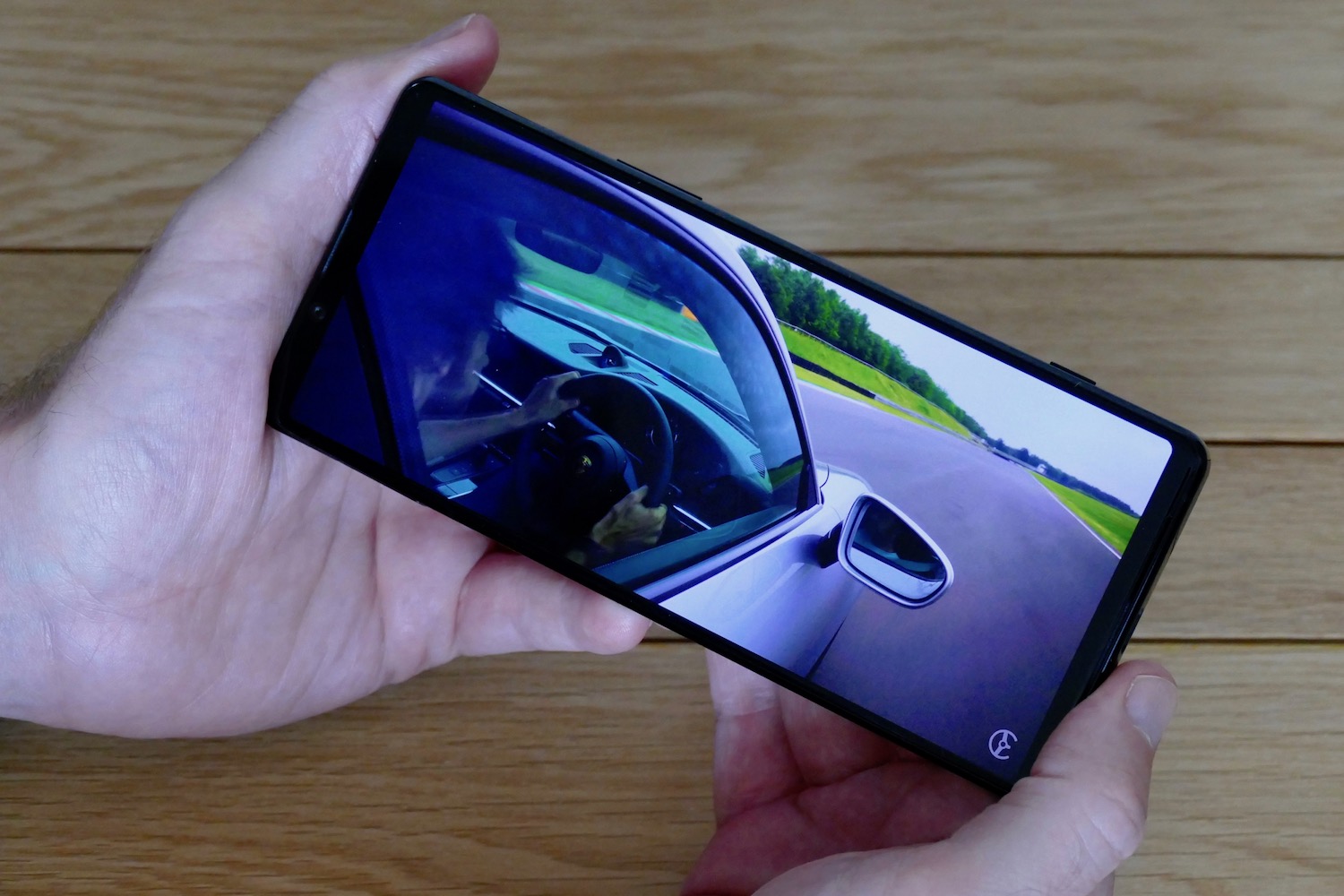“The Xperia 1 II stands apart from other high-end smartphones out there, but its special features are just a little too niche for wide appeal”
- Beautiful, high-resolution screen
- Compact design that's easy to hold
- Camera takes great photos
- Excellent audio
- Fingerprint sensor is weak
- No 5G in the U.S.
Sony is doing its utmost to make devices that don’t conform with the 2020 smartphone rules. The Xperia 1 II (yes, that’s “one two,” as in the sequel to the Xperia 1) isn’t a curvy all-screen phone, it doesn’t have an in-display fingerprint sensor, and to get the most from the camera, it expects you to know your camera tech already. It does follow the herd with the price though, coming in at a hefty $1,200.
It’s refreshing to use a phone that’s not a clone of another this year, but while Sony gets a lot right, the direction it takes in its effort to make the phone stand out is a little too niche. Let’s look at it in more detail.
Design
The Xperia 1 II’s look will split opinion, but I think it looks excellent. It uses a 21:9 aspect ratio screen, giving it an elongated, more-tall-than-wide style, and has square- off sides for a boxy, monolithic shape. The black, high-gloss finish on my review phone is classy if a little faceless, and the build quality and construction are superb.

You’d expect that, right? Of course, but it stands out here. While the sides of the phone are flat, the glass on the front and back has a 2D curve on all sides, and it beautifully and seamlessly blends into the chassis. It’s like the phone has been expertly hewn from a single block of black glass.
On the back is a vertical camera lens module in the left corner. It’s so densely packed with sensors that two wouldn’t fit inside, spilling out onto the body itself. Down the right-hand side is a volume rocker, and a power button that also houses the fingerprint sensor. Below this is a two-stage dedicated camera shutter button. More on these later.

On the opposite side is Sony’s easy-open SIM card tray. It doesn’t need a special tool to extract from the body, making it easier to live with for those who regularly change SIMs or MicroSD cards on the move. It’s also considerably more secure than the one I used on the Xperia 10 Plus, which was too easy to pull out of the phone.
Lightweight at 181 grams and slim at 7.9mm, the Xperia 1 II doesn’t have the curves of the OnePlus 8 Pro, or the slick form of the Huawei P40 Pro, but it does have comfort, grip, and class. The 21:9 aspect ratio means the body isn’t too wide to hold and use with one hand, the glass isn’t slippery, and there’s a cool simplicity to the design that means it’ll still look good in a year’s time.
Screen
What an absolute beauty the screen on the Xperia 1 II is — exactly what you’d expect from a company that makes some of the best televisions out there. (Have you seen the new A8H 4K OLED? It’s superb.) The Xperia’s screen measures 6.5-inches and is an HDR-capable OLED panel with an amazing 3,840 × 1,644 pixel resolution. That’s a pixel density of 643ppi — for comparison, even the beautiful iPhone 11 Pro only manages 458ppi.

To call it simply sharp is an understatement. It’s glorious in ways a smartphone screen doesn’t really need to be. I experimented with wallpapers, videos, and images online and from my own gallery, and it never disappointed. From the inky blacks — set the Dark Mode to really appreciate its depth — to its unwillingness to show even a single pixel, and viewing anything and everything is a joy. This is also where the flat screen pays dividends, as the screen appears to be right on the surface of the glass.
Dig into the settings and you can change the white balance or activate Creator Mode, which tunes the visuals through a special color gamut and 10-bit HDR. It’s created with the help of Sony’s CineAlta team, which is usually busy working on video cameras that shoot the latest blockbuster movies. Sony has also added a video enhancement mode and a motion blur reduction mode. Both are effective, but the look won’t be for everyone. Motion blur, for example, does indeed smooth out video playback on YouTube, but at the expense of realism.

Carfection’s 4K resolution video review of the Alpine A110S on YouTube really plays to the Xperia 1 II’s strengths. The level of detail is fantastic, right down to reading the tire brand and sizes even at a distance, and the color balance is exemplary. If I have a criticism, it’s that the palette is quite cool, so whites can be rather stark at high brightness, but activating Creator Mode can improve this.
Colorful, vibrant, and extremely customizable, it’s probably the best phone screen I’ve seen. What a great shame it doesn’t have a 90 or 120Hz refresh rate, a feature many would consider a staple on any 2020 flagship phone.
Camera
Here’s a rundown of the cameras on the Xperia 1 II. You get a standard 12-megapixel sensor with optical image stabilization (OIS), a 12-megapixel wide-angle sensor, and a 12-megapixel telephoto with OIS. It has a 3D time-of-flight sensor, a flash, a photo light, and Sony’s highly accurate eye-tracking tech. Camera expert Zeiss provides the lenses, and there’s a 3× optical zoom, HDR, 4K HDR video recording at up to 60 frames per second (fps), and a 20 fps burst mode, too.

Sony has also preinstalled two custom camera apps, Cinema Pro and Photo Pro, which emulate the user interface and features found on Alpha cameras such as the Sony A9 and Sony A7 III. Sony has continued to utilize expertise from within, and wants its smartphone cameras to be an extension of its pro-level equipment, providing a similar level of versatility in a compact, portable device. As a strategy, it makes perfect sense; in reality, it’s still something that regular phone buyers may never get to grips with.
Take the Cinema Pro app. It gives you complete control over how you shoot video on the Xperia 1 II, from the focus to the shutter speed, the white balance, the ISO, and even the overall look of your footage. I’ve no doubt that if you’re well-versed in using a pro-level camera to shoot video, the features will be clear and you’ll be shooting top-quality video immediately. If you’re like me, someone who leaves the camera on Auto, then the learning curve is very steep and you’ll shoot a lot of rubbish video before arriving at something halfway decent. The thing is, you could just shoot using the normal camera app and cut out all the sweat and swearing that comes from trying to wrangle Cinema Pro’s settings correctly.
Photo Pro and Cinema Pro are too complex for regular phone buyers, but it’s great to see Sony working to differentiate its devices from others by utilizing its massive internal expertise, and there will be a section of the buying audience that loves the granular control provided by these apps. Does it impact the usability of the normal camera on the Xperia 1 II? Thankfully, no. You can confidently use the phone’s regular camera app and take great-looking, shareable photos in most environments.
It’s not too heavy-handed with the saturation, so photos appear natural but have enough pop that you’ll want to share them without editing. There’s plenty of versatility with the wide-angle and 3× optical zoom too, and the physical, two-stage focus/shutter release button works brilliantly. I did notice some haloing in bright sunlight in some photos, and it’s not great in low light. The selfie camera can also take washed-out, lifeless photos to boot. For the most part, the camera is good, but I think you need to really understand photography and should learn to use the Pro apps to get the best from it.
Here’s where Sony starts to lose points on the fundamentals. The app is poorly designed for a start. For example, the button to flip to the selfie camera is hidden in the menu at the top of the screen, so you have to search for it. It’s also a little slow: There’s a noticeable pause when switching between lenses and when snapping a photo. This is basic stuff, and frustrating on a high-end phone from an experienced manufacturer. Switching to a better camera app might help.
Performance, connectivity, and software
The Qualcomm Snapdragon 865 and 8GB of RAM power the Xperia 1 II, with 256GB of storage space and a slot for either a MicroSD card or a second SIM in that handy, quick-release tray on the side. The phone also has UFS 3.0 for fast memory access (in layman’s terms, it means storage performance is closer to SSDs, but with longer battery life). This is all in line with what we’d expect from a flagship smartphone, and it was as fast and smooth as you’d expect.
Geekbench 5: 895 Single Core/3287 Multi Core
3DMark Sling Shot Extreme: 6,062 (Vulkan)
These scores are a little lower than the OnePlus 8 Pro, and lower on 3DMark than the Exynos-powered Samsung Galaxy S20 Plus, although the Xperia does beat it on Geekbench 5. I didn’t notice any performance deficit. I like gaming on the Xperia 1 II. I played mostly casual games, spending way too much time on Hill Climb Racer, mostly because the phone is very comfortable to hold in landscape orientation. The widescreen 21:9 aspect ratio looks great, the screen is incredibly sharp, and I didn’t really miss a higher refresh rate either. When playing more graphically intensive games like Real Racing 3, the phone copes superbly and never gets hot.
Despite the Sony phone having a 5G-ready Snapdragon 865 processor, 5G is disabled in the U.S. It’s active in the U.K. version, but I couldn’t test the feature out due to 5G not being available in my area. Not having 5G in a phone at this price does impact its long-term appeal. Calls all sounded good, although reception was slightly problematic, with the phone not pulling in a strong signal compared to others. The phone also has a tendency to get quite hot when on longer calls, but against your palm rather than your face.
My review phone has Android 10 with the July 1 Android Security Patch installed. It also has Sony’s own user interface over the top, which is very similar to Google’s Pixel-branded software. Gestures work well, there’s an effective Dark mode, and the notification shade and app drawer are where you expect them to be. I didn’t have any problems with speed, but I was sometimes frustrated by apps taking a while to close after swiping to exit.
There are a few too many preinstalled apps, including LinkedIn, which send prompts to use them when you start using the phone. This is also true of Sony’s own apps, such as its News Suite app, which isn’t very attractive and is populated by too many sponsored stories to be useful. Many other manufacturers have abandoned this practice, or at least provide the option of preinstalling these moneymaking recommended apps during setup. It’s annoying Sony doesn’t do the same.
Battery and sound
The 4,000mAh battery lasts for about five to five-and-a-half hours of screen time each day. This meant outside of very heavy days of use, it managed a full 8 a.m. to midnight stretch before needing a recharge. It’s acceptable, but not great. The fingerprint sensor is the same — acceptable but not great. It’s unreliable and quite awkward to use, because it’s smaller than the side sensors used on previous Sony phones. It doesn’t like wet fingers either. All this is made more annoying by the lack of face unlock to fall back on.

Sony has put stereo front-facing speakers on the Xperia 1 II, and they’re excellent, with a full, deep, and engaging sound. Audio is enhanced with a feature called Dynamic Vibration, which uses haptic motors to add a vibration to media played on the phone. It operates in many apps including YouTube and Twitter, and is surprisingly effective. It can get a little too much during music videos, where it just constantly vibrates, but is quite fun on movies. Best of all, you can adjust the intensity or turn it off completely if you don’t like it, right from the volume panel.
The excellent audio performance combined with the stunning screen make the Xperia 1 II a superb multimedia phone.
Price, warranty, and availability
The Xperia 1 II costs $1,199 in the U.S. and is available now from Sony, Amazon, and other retailers. In the U.K., the Xperia 1 II costs 1,099 British pounds.
Our take
The Sony Xperia 1 II is something a little different, and that instantly makes me warm to it. The screen is one of the best in the business, the camera takes some great photos, and the quality of the phone itself is superb. I also appreciate Sony’s attempts to make the Xperia 1 II stand out from the crowd. But the complex, pro-level camera apps have very niche appeal, and the decision not to include 5G in the U.S. models is as baffling as it is unfortunate.
Is there a better alternative?
Yes. If you want a top-spec Android phone with a good camera, we recommend either the Samsung Galaxy S20 Plus or S20 Ultra, depending on your budget, or suggest you go take a look at the Galaxy Note 10 Plus or the new Galaxy Note 20 Ultra. The OnePlus 8 Pro is also highly recommended, and is considerably cheaper. If you’re in the U.K. or don’t mind importing, then the Oppo Find X2 Pro is also excellent.
Our other suggestion here is to buy an iPhone 11 Pro or 11 Pro Max. The camera is excellent, and if you want pro-level tools. there are many apps available in the App Store to replicate Sony’s Cinema and Video Pro app functionality. You’re getting our recommendation of the best overall phone you can buy today as a bonus, but be aware that it too does not come with 5G. For that, you’ll have to wait for the iPhone 12, which arrives in the fall.
How long will it last?
The Xperia 1 II has an IP68 water and dust resistance rating, giving it a good chance of survival if things take a turn for the damp, and the Gorilla Glass 6 both front and back is durable. My review model did pick up a couple of faint scratches on the screen simply by spending a relatively short amount of time in pockets and bags. A screen protector and a case would be advisable.
While the lack of 5G in the U.S. version isn’t a big deal for everyone right now, it will become an increasingly desirable feature over the next two years, which is the minimum amount of time we’d expect you to keep this phone, and not having it as an option may be a problem. We advise you to think carefully whether you’re likely to want 5G in the near future, and purchase accordingly.
Sony has not said when Android 11 will arrive on the Xperia 1 II. When we checked about ongoing software updates more generally, we were told, “Sony Mobile is providing regular and timely security upgrades. While phones cannot be upgraded indefinitely, we provide security upgrades within the industry standard on our devices, depending on regions and carriers.”
Should you buy it?
No. Despite its strengths, you can buy a phone with similar features that has 5G on board and is ready for the future. When you spend $1,199 on a phone, you expect it to have the very latest tech to guarantee longevity. In the U.K., where the phone does have 5G, the Xperia 1 II becomes a better choice.

